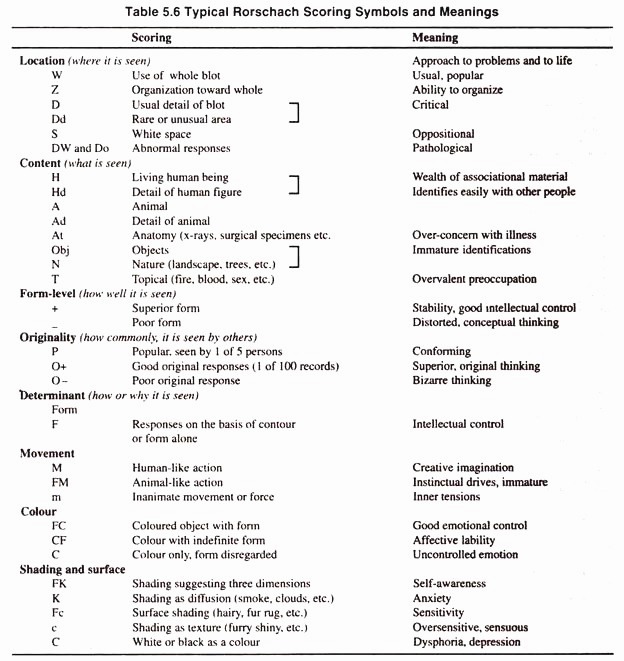ADVERTISEMENTS:
In this essay we will discuss about the types of personality tests: 1. Thematic Apperception Test 2. Rorschach Test 3. Sentence Completion Test 4. The Draw-a-Person Test 5. Word Association Test 6. Picture-Frustration Study (P-F).
Essay # 1. Thematic Apperception Test (TAT):
This test, developed by Morgan and Murrary, is typical of the group. From ten to twenty of a series of thirty pictures are shown.
These are designed to permit identification with persons of both sexes and of different age levels; in some the details are quite indefinite and ambiguous. The subject projects his personality into the situation by building stories about each picture.
The interpretation of the test depends upon the figures with which the subject seems to identify, the characteristic mood prevalent in the stories, endings, formal features, topical generalizations, and other dynamic clues. More so than many projective devices, the TAT reveals the content of the patient’s fantasies.
Essay # 2. Rorschach Test:
The Rorschach is the best known of the projective techniques. Introduced by the Swiss psychiatrist Hermann Rorschach (1884-1922), it has been complexly elaborated. The test consists of a standard series of ten ink blots, some in black and white and some coloured. These are shown, one at a time, to a subject who is instructed to state what the blot looks like to him or of what it reminds him. Responses are recorded verbatum.
The typical Rorschach scoring symbols and their meaning are given in Table 5.6:
Some Popular Responses for different Rorschach Cards are:
1. Any winged animal or topographical detail
2. Two animals
3. Two persons
4. Animal skin
5. Winged animals
6. Animal skin, lamp post
7. Cartoon like figures ,ornamental things
8. Two animals, emblum
9. The clownish figures blowing pipes, deer heads, head like structure.
10. Call – like structure, various other animals, caterpillar, lungs, trachea, etc.
Essay # 3. Sentence Completion Test:
Various tests have been devised which require that the patient completes sentences beginning in some such way as ‘I become very angry when…”or “Other people think I…” Although this type of test is more transparent than most projective tests and generally does not utilize uniform scoring instructions, it is a useful supplementary source of data on how the patient wishes to present his attitudes about himself and toward others. Both mood and content are noted in relation to such areas as home, work, sickness, immediate family, etc.
Essay # 4. The Draw-a-Person Test:
This test, originated by Good enough and further explored by Machover, is believed to provide data about the patient’s feelings and perceptions of bodily image. The subject is asked to ‘draw a person’ and later to draw the opposite sex. Intuitive analysis is carried out concerning structural factors (placement of figure on the page, etc.) and content factors (parts of body used, emphasized or de-emphasized etc.).
Essay # 5. Word Association Test:
The word association test popularized by Jung consists of a series of 50 or more words which are presented to the subject one at a time. Mixed in the list are words assumed to be related to conflicts of this patient or words which generally produce emotional reaction. The type of association given to these words, together with signs of emotional disturbance such as delayed to responses, suggests that the key word is related to a hidden complex.
Essay # 6. Picture-Frustration Study (P-F):
This test, developed by Resenzweig, consists of 24 cartoon like pictures, each representing two persons who are involved in a mildly frustrating situation of common occurrence. One figure in each picture is shown saying certain words which either frustrate the other individual or help to describe what is frustrating him. After examining the picture the subject writes in the blank space the first reply that enters his mind.
The answers are scored in terms of the directions and type of aggression (i.e., extra punitive if directed out upon the environment, intrapunitive if directed upon himself, or impunitive if the aggression is turned off).
Similarly the responses are scored in terms of whether the patient is concerned more with the nature of the frustrating situation (obstacle-dominant), with protecting himself (ego-defensive), or with which solution of the problem is most important (need-persistive). Interpretation is in relation to group norms and is suggested as giving some indication of the patient’s usual behaviour when under frustration.

